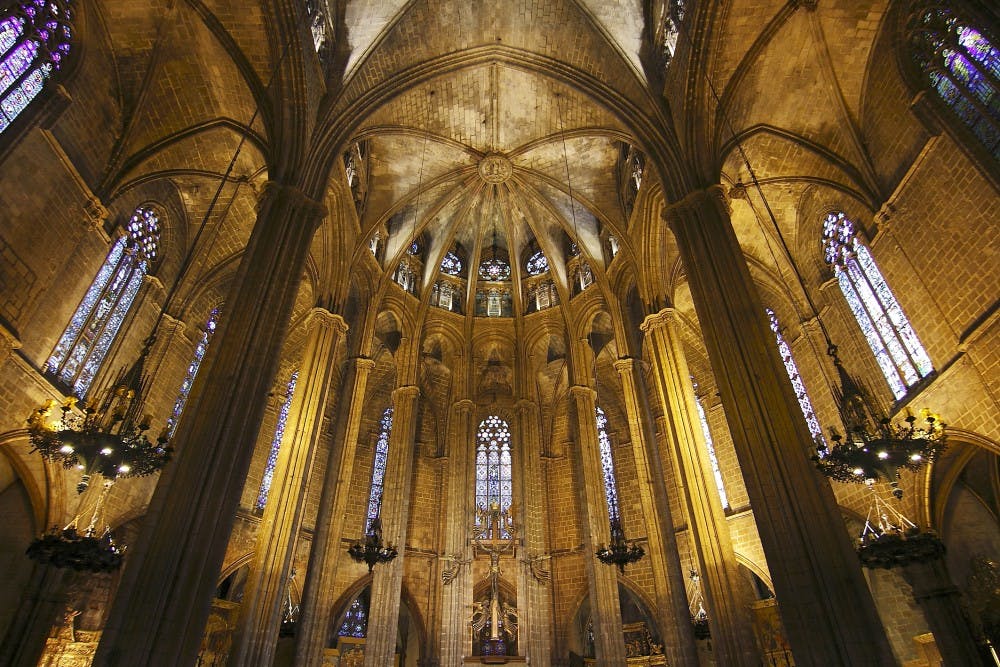Philadelphia’s rich history is one of its most venerated attributes—the founding fathers of the United States are memorialized all over the colonial city, including on Penn’s campus. We find comfort and connection in these visual reminders of our country’s past and generally take for granted that they are accurate. However, this is not the case in all cities.
One of the most–visited sections of Barcelona, where I’m currently studying abroad, is its charming barrio gótico, or gothic neighborhood. This section of the city has mazes of narrow stone corridors that give way to expansive historical plazas. One is where Christopher Columbus was supposedly received by Ferdinand and Isabella after his first trip to the New World. But despite its romantic and antiquated appearance, the Gothic Quarter is a 20th century invention.
Many of the original buildings in the Gothic Quarter were destroyed in an effort to improve the city’s circulation and hygiene during the late 19th century. In 1887, the reconstruction of the façade of the Barcelona Cathedral also sparked a series of renovations in the neighborhood that continued until the 1970s. Today, much of the neighborhood has been rebuilt in the gothic style. City marketing—not historical accuracy—was the clear goal of the neighborhood’s overhaul. Barcelona desired a tangible and attractive display of its history to present to visitors. The newly modernized city successfully branded its “antique” gothic quarter, drawing tourists from around the world with its quaint plazas, cafes and shopping.
This begs us to ask: is the Gothic Quarter in Barcelona an unethical falsification? Much of the value we place on historical artifacts is tied up with their authenticity. But we have conflicting thoughts on how to preserve the past while simultaneously creating new entities that give us pride in the present.
We frequently choose—and edit—our own history based on what is socially and economically appealing. We purposely overlook unflattering events and memorialize the honorable. Most of all, we use monuments to create a sense of continuity with the past—to forge a connection with previous generations.
The most honest presentations of history, however, aren’t always better. Take the reconstruction of George Washington’s Philadelphia house, which opened near the Liberty Bell in 2010. Once one of the grandest mansions in the city, the house was demolished in the 1830s. Five years ago, an archeological dig revealed the home’s foundation and a tunnel once used by Washington’s slaves. When the decision to reconstruct it was made, there was heated debate over creating a design that would appropriately acknowledge the site, as well as Washington’s slaves, with honesty and integrity.
Today, we see the reconstruction as an open–air pavilion that outlines the foundation of the original house. Empty window frames and partial brick walls mark where the Washington’s house once stood. Cold granite and metal suck the warmth from the brick. The open nature of the structure leaves visitors with a literal lack of closure. Eerily postmodern television screens adorn the walls and tell the stories of slaves that once lived in the home.
Although there is no mistaking this reconstruction for the original, the redesign of George Washington’s home feels cold and incomplete. It the lacks richness and charm we seek from historical sites. It’s honest, yet wholly unsatisfying.
So, when it comes to historical sites, I prefer falsification to minimalist reconstruction. A restoration should attempt to maintain a feeling of authenticity—even in modern construction—by allowing us to relate to the original site. Seemingly accurate historical restorations, like those in Barcelona’s Gothic Quarter, are more inspiring and rewarding than coldly unfinished, conservative restorations. When it comes to illustrating history, less is not always more.

